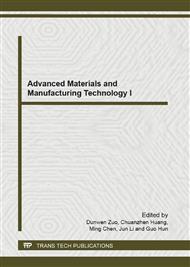p.359
p.364
p.368
p.372
p.376
p.382
p.387
p.391
p.396
Research on Negotiation for Slotting Allowances between Retailers and Suppliers Based on Game Theory
Abstract:
Suppliers have to pay a certain sum of money in order to enter into retailers’ sales area, which is a common way of transaction in the Market Economy, but some giant retailers take advantage of the sales channel resources they have possessed and charge unreasonable slotting allowances from suppliers for one reason after another, which damages suppliers’ legal rights and interests, disrupting the normal market trading order. To some extent, it even damages customers’ legal rights and interests, which does no good to the sustained and sound development of retailing business. Therefore, based on game theory, this paper analyzes some factors affecting slotting allowances so as to provide some theoretical proof to effectively regulate slotting allowances in circulation of goods and improve the relationship between suppliers and retailers.
Info:
Periodical:
Pages:
376-381
Citation:
Online since:
January 2012
Authors:
Price:
Сopyright:
© 2012 Trans Tech Publications Ltd. All Rights Reserved
Share:
Citation:


